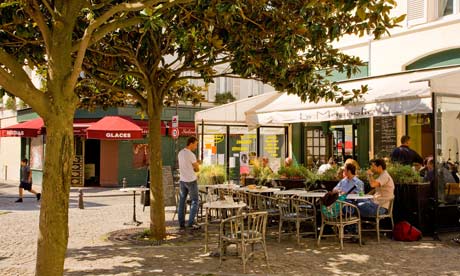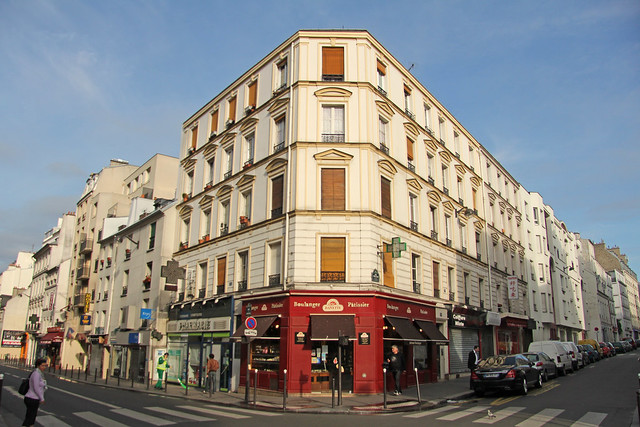 For most of its existence, Charonne was a quiet and bucolic place, where rich Parisians had country houses and sent their children to be brought up by nannies.
For most of its existence, Charonne was a quiet and bucolic place, where rich Parisians had country houses and sent their children to be brought up by nannies.  It is perhaps the fact that it has always been a residential place with little or no industry that has helped preserve its charm, with the medieval street layouts still resisting urban planners. However, it is far from being a sleepy place today. It may still have a village feel, but it is that of a village that could be situated equally in France, Algeria or Mali.
It is perhaps the fact that it has always been a residential place with little or no industry that has helped preserve its charm, with the medieval street layouts still resisting urban planners. However, it is far from being a sleepy place today. It may still have a village feel, but it is that of a village that could be situated equally in France, Algeria or Mali. It is this point which really differentiates it from the other ancient communities - such as Montmartre, Vaugirard and Batignolles - that were annexed by Paris at the same time. Although undoubtedly more touristic and superficially more attractive, the soul of these places was long ago sold to gentrification. Charonne is not a village of luxury food stores and antique shops, but rather a place that provides a home to those excluded from the city centre.Anyone who has visited Paris's Père Lachaise cemetery has already visited the village of Charonne. The best known of the city's graveyards was opened in 1804, technically within the limits of Charonne, but officially to serve the needs of Paris. Beyond this megalopolis of the dead, though, is the true village cemetery, a pocket-sized burial ground situated – curiously for Paris – behind the Saint Germain de Charonne church.

This church, sitting on a plateau above what was the heart of the village, can date its origins back to at least the 12th century, and its solid Romanesque tower has always provided the village's main focal point. Directly opposite is the ancient village high street, the still cobbled rue Saint Blaise. The combination of these two elements give this area a quaint, provincial atmosphere, and it is easy to forget that the old boundaries of the Charonne village now form the eastern half of the city's densely populated 20th arrondissement. Walk a few hundred metres further east and you'll find high-rise tower blocks and the city's periphérique motorway.
For most of its existence, Charonne was a quiet and bucolic place, where rich Parisians had country houses and sent their children to be brought up by nannies. It is perhaps the fact that it has always been a residential place with little or no industry that has helped preserve its charm, with the medieval street layouts still resisting urban planners. However, it is far from being a sleepy place today. It may still have a village feel, but it is that of a village that could be situated equally in France, Algeria or Mali.
It is this point which really differentiates it from the other ancient communities – such as Montmartre, Vaugirard and Batignolles – that were annexed by Paris at the same time. Although undoubtedly more touristic and superficially more attractive, the soul of these places was long ago sold to gentrification. Charonne is not a village of luxury food stores and antique shops, but rather a place that provides a home to those excluded from the city centre.

Walking along the rue Saint Blaise you can see that in comparison to the city's other ancient villages, Charonne is a scruffy place. On the passage des Deux Portes, an alleyway leading off from the rue Saint Blaise, arecent survey found 35 different species of wild plants growing through the cracks in the pavement – the highest number of any street in the Paris region! This discovery seems completely appropriate in an area which mixes cobblestones and concrete, ancient low-rises and 1970s high-rises.

It is though the scruffiness and disorganisation of this district that gives it its authenticity. On sun-trap squares you won't find the terraces of chic bars or restaurants, but instead groups of kids playing football.

These are the city back streets, where narrow winding roads and alleyways are barriers to motor traffic. It is the kingdom of the pedestrian, with the kind of small community aspect that would be impossible along the broad avenues and boulevards of the rest of Paris. Charonne has no particular sites to see, but many surprises, such as the old Petite Ceinture railway line which appears overhead near the busy rue des Pyrenées. Still technically operational today – and therefore forbidden to visitors – it offers an urban wilderness for the adventurous.
No comments:
Post a Comment